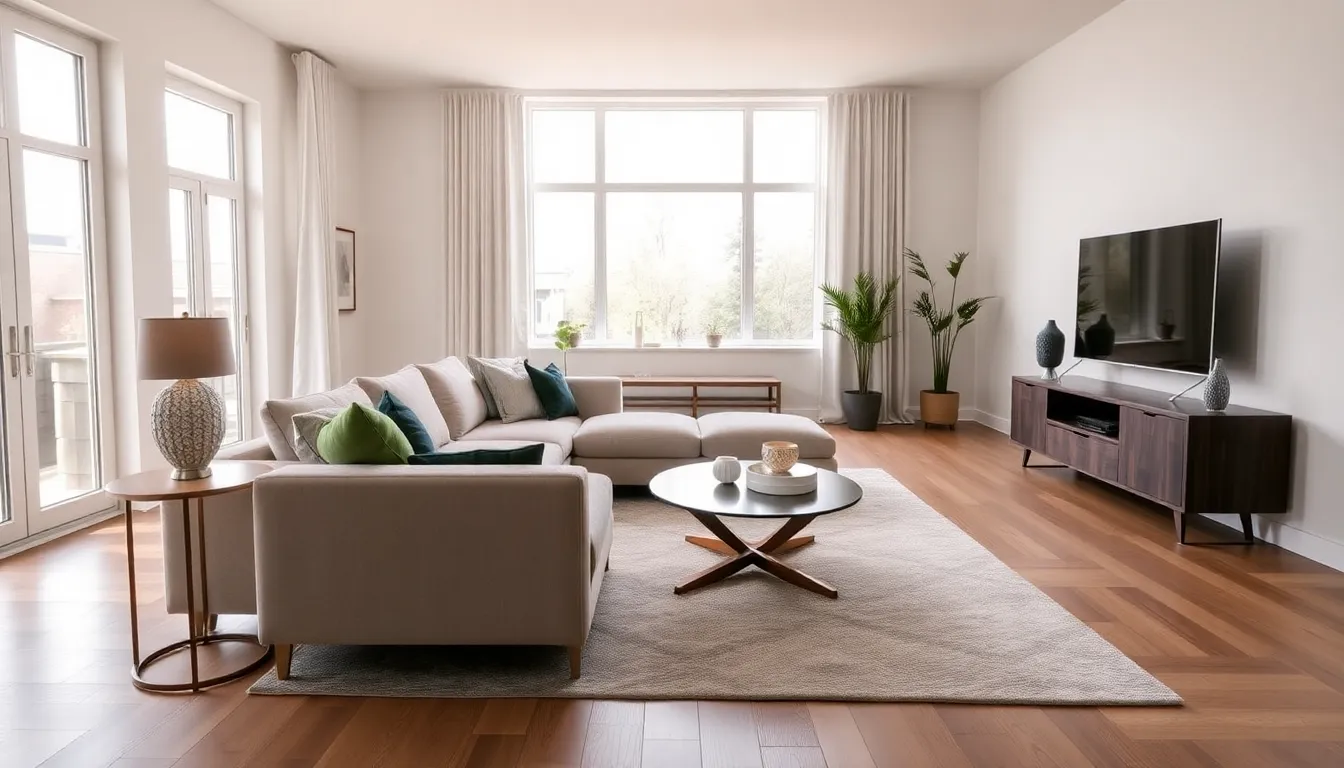Finding the right furniture for your home can feel like searching for a needle in a haystack. With so many styles, sizes, and materials to choose from, it’s easy to feel overwhelmed. But fear not. This guide will take you on a journey through furniture selection that’s sure to make your space feel like a million bucks, without actually spending it. Whether you’re redecorating an entire room or just looking to refresh a space, these tips will help you avoid the common pitfalls of furniture shopping and find pieces that are comfortable, functional, and totally you.
Table of Contents
ToggleUnderstanding Your Space Needs

Before diving into the world of furniture shopping, it’s crucial to assess your space needs. Are you working with a cozy apartment or a sprawling house? Understanding the measurements of your rooms will guide you toward the right furniture choices.
Assessing Room Size
Measure each room carefully, taking into account doorways, windows, and any architectural features that might influence furniture placement. Create a rough outline or sketch of your layout to visualize where every piece will go. This way, you avoid the nasty surprise of an oversized sofa battling for space with a coffee table.
Purpose of Each Room
Next, think about how you use each room. Is your living room a gathering place for friends or a cozy retreat for Netflix binges? Different functionalities may call for different styles and dimensions. For example, if you entertain often, consider a sectional sofa that allows for maximum seating without overwhelming the room.
Balancing Open Space
Don’t forget about open spaces. If you have areas that flow into one another, choose furniture that complements each space and creates a sense of harmony. Select colors and textures that blend well, making those transitions feel seamless and inviting.
Choosing Furniture Styles That Match Your Home
Now that you know your space needs, it’s time to consider furniture styles. This can feel like staring at an endless buffet of choices, so many tempting options that it’s hard to pick just one.
Identifying Your Aesthetic
Begin by identifying your personal style. Do you lean more toward modern chic, rustic farmhouse, or maybe timeless traditional? You can find countless inspiration online: Pinterest and Instagram are treasure troves for discovering current trends.
Cohesion is Key
Once you have an idea of your aesthetic, aim for cohesive furniture choices. Mixing styles is fun but can lead to chaos if not done sparingly. Stick to a few key styles that play well together. A successful blend can create delightful contrasts while maintaining a sense of unity across spaces.
Function Over Fashion
While looks matter, functionality is crucial. Consider how each piece will fit into your daily life. A beautiful coffee table might lose its charm if it’s always cluttered with more stuff than you’d ever want. Select furniture that doesn’t just look pretty but also serves a purpose
Essential Furniture Pieces for Every Room
When it comes to outfitting a home, some furniture pieces are essential across all rooms. Let’s explore what you might need, ensuring that every space is both functional and stylish.
Living Room Essentials
Every living room should have a comfortable sofa and perhaps an armchair or two for additional seating. A coffee table is a must: think about its style and size in relation to your sofa. Don’t forget entertainment units if you have a television, there are sleek options that can seamlessly blend in.
Kitchen Necessities
In the kitchen, barstools or dining chairs that fit around your table or island are vital. A sturdy dining table is also a must-have, whether it’s for family dinners or hosting friends on game night.
Bedroom Basics
When it comes to the bedroom, a bed frame is obviously non-negotiable. Don’t overlook the importance of bedside tables and dressers, as they significantly contribute to both storage and style.
Multifunctional Pieces
In smaller spaces, think multifunctionality. Sofa beds or storage ottomans can solve many space-related quandaries. If room permits, a desk space might be worthwhile, especially in today’s world where many work from home.
Tips for Maximizing Comfort and Functionality
Comfort and functionality need to be top of mind when picking your furniture. After all, furniture is an investment in your coziness.
Sizing Furniture for Comfort
Take your measurements seriously. Ensure seating isn’t too deep or too firm for your liking. If you’re unsure, heading out to a store to try it out can’t hurt. Testing how a sofa feels before purchase is often more telling than reading reviews online.
Versatile Layouts
Consider the furniture layout. Arranging furniture optimally can enhance both comfort and functionality. Avoid placing large items in tight corners: that might limit movement and disrupt the flow of the room.
Personal Touches
Adding personal touches can elevate comfort. From patterned throw pillows to cozy blankets, small decorative items can help a space feel warm and inviting. Your furniture should not just serve a function: it should exude personality.
Cost-Effective Furniture Shopping Strategies
Who says nice furniture has to come with a hefty price tag? Anyone can create a beautifully furnished home on a budget with the right approach.
Budgeting Wisely
First things first, set a realistic budget. Knowing what you can spend helps narrow down choices from the get-go, making the entire process less daunting.
Sales and Discounts
Don’t ignore sales events and holiday discounts. Furniture stores often have significant markdowns during holiday weekends. You might just score that dream piece at a fraction of the price.
Thrift and Vintage Options
Consider thrift shops and online marketplaces. These can be goldmines for unique pieces that give character to your home without very costly. A little bit of elbow grease can turn a faded find into a breathtaking centerpiece.
Sustainable and Eco-Friendly Furniture Options
In today’s world, eco-conscious consumers are on the rise. Finding sustainable furniture options doesn’t just benefit the planet: it also adds a forward-thinking twist to your home.
Materials Matter
When shopping, look for furniture made from sustainable materials like bamboo, reclaimed wood, or recycled metals. These options reduce environmental impact while delivering stunning pieces.
Certifications and Labels
Check for certifications like GREENGUARD or Forest Stewardship Council (FSC) when making your choices. These labels indicate the furniture adheres to strict environmental standards.
Local Artisans
Considering local artisans can also lead to sustainable buys. Handcrafted pieces often have a lower carbon footprint since they don’t travel far to reach your home.






